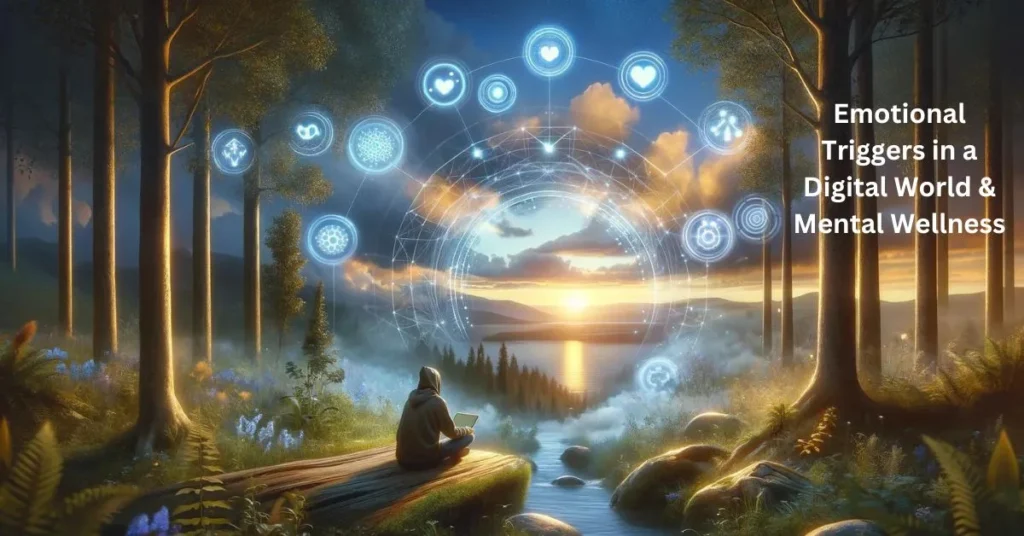Contents
- The Anatomy of an Emotional Trigger
- Recognizing Personal Triggers
- The Intersection Between Social Media and Emotional Triggers
- Strategies for Coping with Triggers in the Digital Age
- The Role of Community Support Networks
- Technology Tools to Manage Triggers
- Educating Yourself on Emotional Health in the Digital Realm
- Creating a Trigger-Resilient Lifestyle
The Anatomy of an Emotional Trigger
An emotional trigger in the digital context is any online content—words, images, or interactions—that evokes a significant emotional reaction, which can be negative or positive. With the advent of digital technology, triggers have transcended traditional personal interactions and infiltrated our virtual lives. Common digital triggers include heated discussions on social media platforms, specific news events, or reminders of personal experiences curated by algorithms. The complexity of these triggers is due to the personalized nature of our digital engagement, where algorithms often echo our preferences or fears, unwittingly confronting us with potent personal triggers.
Recognizing Personal Triggers
Recognition of individual triggers is an intimate and crucial process. Triggers are inherently varied and idiosyncratic; what deeply affects one individual may not affect another. A profound understanding of your emotional responses while consuming digital content is vital. Common indicators of being emotionally triggered include sudden mood shifts, anxiety, anger, or sadness upon encountering specific digital stimuli. Such self-awareness is the first step towards establishing strategies to mitigate the impact of triggers, thus ensuring a healthier relationship with digital content.
The Intersection Between Social Media and Emotional Triggers
Social media is a space where emotional triggers are plentiful. Each click or swipe can reveal unpredictable content—some of which may relate to personal challenges or globally stressful events—thus intensifying emotional responses. The network of social interactions on these platforms magnifies the effect of triggers. For instance, repetitive exposure to specific topics may reinforce negative emotional states. The constant state of vigilance can be exhausting, so understanding how social media can catalyze emotional triggers and develop coping mechanisms is essential.
Strategies for Coping with Triggers in the Digital Age
Learning to cope effectively with digital triggers involves a combination of mindfulness and boundary-setting. Mindfulness encourages individuals to observe their reactions without immediate response, fostering a space for rational processing. This strategy’s Practical applications include pausing before responding to a triggering post or regularly opting for a digital detox. Establishing healthy digital boundaries, such as limiting time spent on specific platforms or muting keywords that trigger distress, can also help maintain control over the digital environment. Their efficacy in preserving mental wellness underscores the importance of building resilience through these mindful practices and digital boundaries.
The Role of Community Support Networks
In navigating digital triggers, community support networks can play a pivotal role. These can be trusted friends, family members, or even online peers in forums or support groups who provide an empathetic ear and constructive advice. In cases where triggers cause significant distress, engaging with mental health professionals can provide additional strategies and therapeutic insights. Both offline and online support networks foster a sense of belonging and provide relief in knowing that one is not alone in managing emotional triggers.
Technology Tools to Manage Triggers
The paradox of technology being both the source and solution to managing emotional triggers is not lost in this discourse. With numerous apps designed to support mental health, users can access mindfulness techniques, breathing exercises, and even AI-driven chatbots that offer immediate assistance in distress. Adjusting notification settings and utilizing content filters are other ways technology can be harnessed to shield oneself from unnecessary digital stressors.
Educating Yourself on Emotional Health in the Digital Realm
Education is empowering, especially in understanding the complexities of emotional health within the digital sphere. Resources such as research underscore the relationship between online behavior and emotional wellness. By keeping abreast of the latest studies and theoretical advancements in digital emotional health, individuals can make informed decisions prioritizing their mental well-being. This proactive learning is complemented by personal experimentation with different coping strategies to find what works best on an individual level.
Creating a Trigger-Resilient Lifestyle
To minimize the effects of digital triggers, cultivating a trigger-resilient lifestyle is paramount. This involves fostering offline interests that provide a healthy counterbalance to online activities. Physical exercise, hobbies, and time in nature are essential aspects of a holistic lifestyle. They serve as buffers against the stress induced by digital triggers. Taking active measures to balance online engagement with offline rejuvenation fortifies emotional resilience. According to findings published regarding balancing technology use with other aspects of life, it is essential for emotional well-being.
Ongoing efforts to comprehend and confront digital triggers are part of creating a vibrant and well-rounded existence in the current era. Embracing the challenge of proactively managing digital triggers is a commitment to personal well-being and an investment in cultivating a more empathetic and considerate digital landscape for all.

